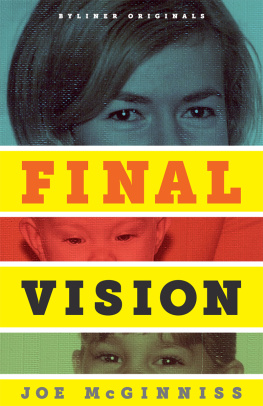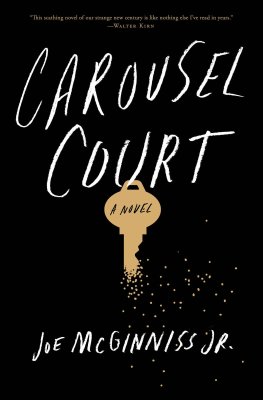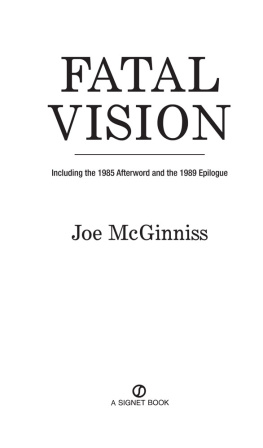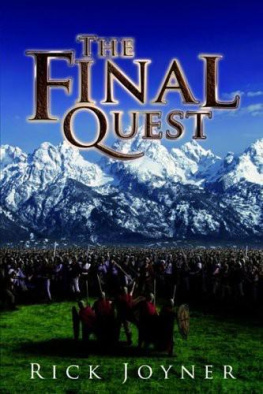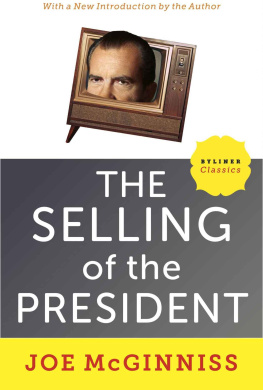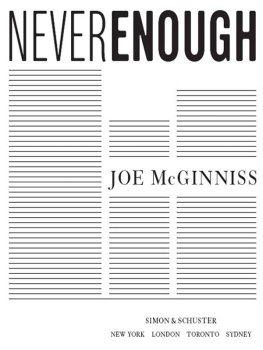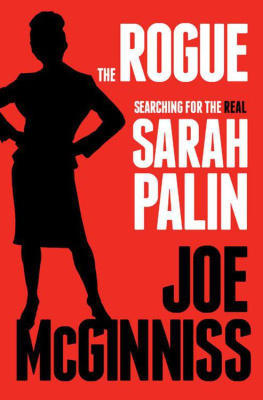McGinniss - Final Vision
Here you can read online McGinniss - Final Vision full text of the book (entire story) in english for free. Download pdf and epub, get meaning, cover and reviews about this ebook. year: 2012, publisher: Byliner Inc., genre: Detective and thriller. Description of the work, (preface) as well as reviews are available. Best literature library LitArk.com created for fans of good reading and offers a wide selection of genres:
Romance novel
Science fiction
Adventure
Detective
Science
History
Home and family
Prose
Art
Politics
Computer
Non-fiction
Religion
Business
Children
Humor
Choose a favorite category and find really read worthwhile books. Enjoy immersion in the world of imagination, feel the emotions of the characters or learn something new for yourself, make an fascinating discovery.
- Book:Final Vision
- Author:
- Publisher:Byliner Inc.
- Genre:
- Year:2012
- Rating:4 / 5
- Favourites:Add to favourites
- Your mark:
- 80
- 1
- 2
- 3
- 4
- 5
Final Vision: summary, description and annotation
We offer to read an annotation, description, summary or preface (depends on what the author of the book "Final Vision" wrote himself). If you haven't found the necessary information about the book — write in the comments, we will try to find it.
Final Vision — read online for free the complete book (whole text) full work
Below is the text of the book, divided by pages. System saving the place of the last page read, allows you to conveniently read the book "Final Vision" online for free, without having to search again every time where you left off. Put a bookmark, and you can go to the page where you finished reading at any time.
Font size:
Interval:
Bookmark:

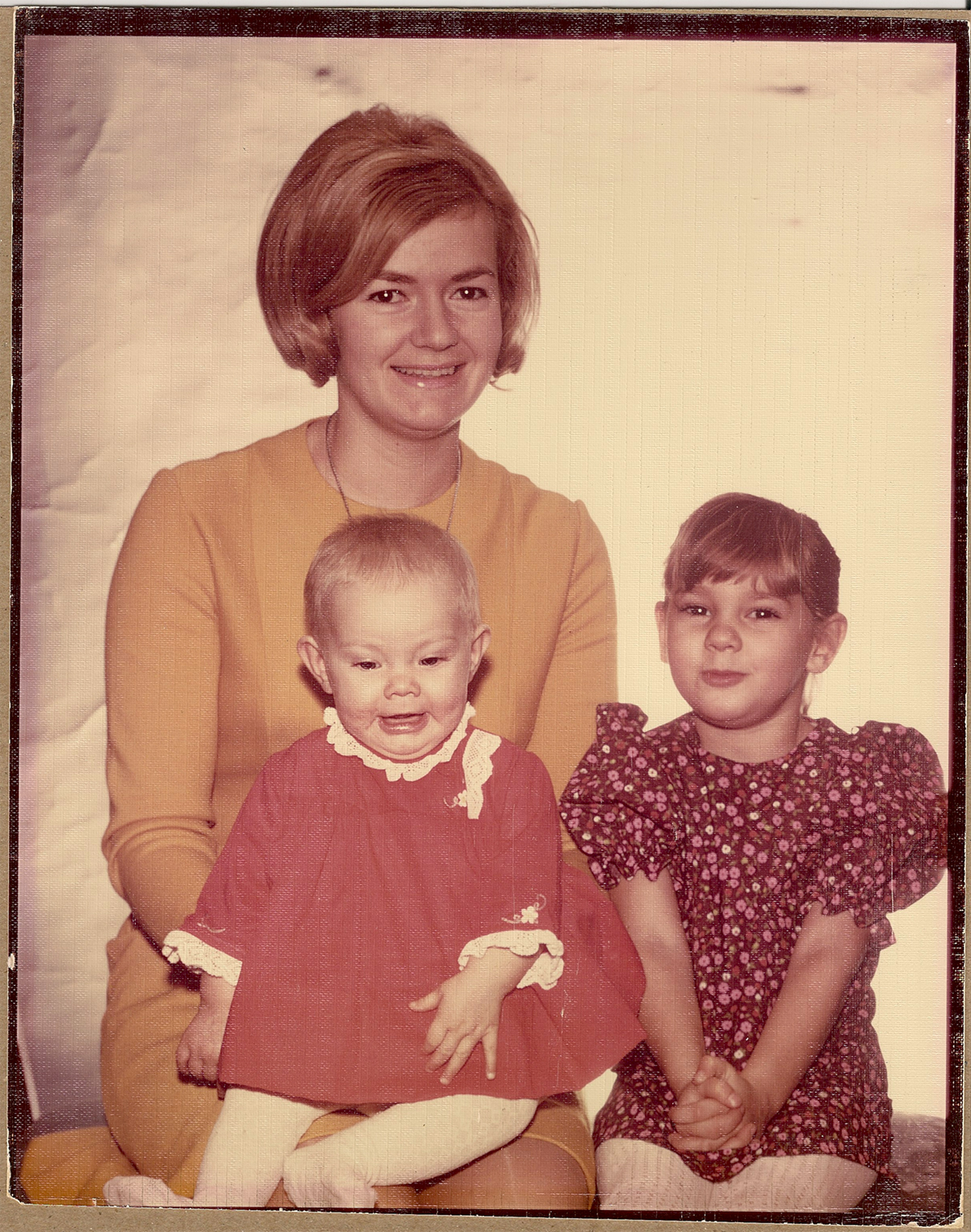
Colette MacDonald with daughters Kristen (left) and Kimberly.
Courtesy of www.thejeffreymacdonaldcase.com
Please be sure to visit Byliner.com for the latest updates to this story.
Copyright 2012 by Joe McGinniss
All rights reserved
Cover image courtesy of www.thejeffreymacdonaldcase.com
ISBN: 978-1-61452-055-9
Byliner Inc.
San Francisco, California
www.byliner.com
For press inquiries, please contact
10 9 8 7 6 5 4 3 2 1
We were young at the start.
MacDonald, the murderer; Murtagh, his nemesis; and me.
Now we are old. And still the case wont die.
It is the longest-running criminal case in U.S. history, United States of America v. Jeffrey R. MacDonald. It has lasted forty-two years and remains at least three or four years from closure.
If you know about the case, at least some of what you know is probably wrong. If you dont know about it, you should, because its a story that reveals as much about Americathe best and the worst of itas any other youll hear.
At 3:42 a.m. on February 17, 1970, military police at Fort Bragg, North Carolina, near Fayetteville, responded to an emergency call placed by a man requesting assistance at 544 Castle Drive, in a section of the base that housed married officers.
Arriving at the address within ten minutes, military policemen found three bodies awash in a sea of blood. Twenty-five-year-old Colette MacDonald had had her skull fractured by a club. Shed been stabbed nine times in the neck and seven times in the chest with a knife, and twenty-one times in the chest with an ice pick. Both of her arms were broken.
Her five-year-old daughter, Kimberly, had had her skull, cheekbone, and nose fractured by a club. Shed been stabbed eight to ten times in the neck with a knife. Her two-year-old daughter, Kristen, had been stabbed twelve times in the back, four times in the chest, and once in the neck with a knife, and approximately fifteen times in the chest with an ice pick.
The autopsy showed that Colette had been five months pregnant with a baby boy.
The MPs also found twenty-six-year-old Green Beret captain Jeffrey MacDonald lying motionless next to his wife on the floor of the master bedroom, wearing only a pair of pajama bottoms. On the headboard of the bed, the word PIG had been written in blood.
Jeffrey MacDonald was alive. He moaned and then cried out, Check my kids.
He said hed been sleeping on the living room couch when two white men and one black man attacked him. With them was a white woman who had long blond hair and was wearing high boots and a floppy hat. She was holding a lit candle and chanting, Acid is groovy Kill the pigs. Hed tried to fight off the three men, but theyd knocked him unconscious. He said he was a doctor and that he thought he was going into shock. If that happened, he said, the MPs should elevate his legs, keep him warm, and make sure he didnt swallow his tongue.
And so it began: the saga of the Princeton-educated Green Beret doctor who never served in Vietnam, never saw combat, and killed no one other than his own wife and children.
Brian Murtagh first got involved in 1971, as a twenty-five-year-old military attorney. He stayed involved throughout a forty-year career as a Justice Department prosecutor. It was by no means his only assignment: he was also lead U.S. prosecutor in the case that arose from the bombing of Pan Am Flight 103 over Lockerbie, Scotland, in 1988. But for more than thirty years, every time MacDonald tried to argue his way out of prison, he found Murtagh there, barring the door with impeccably prepared legal briefs.
As for me, I got involved in 1979. I had planned to write only a newspaper column about MacDonald. I wound up writing a book about the case, Fatal Vision, first published in 1983. All these years later, the story has yet to let me go.
MacDonald told investigators hed been knocked unconscious in a struggle against four murderous intruders who burst into his home and attacked him as he slept on his living room couch.
But despite the massacre of his wife and children, MacDonald was almost unharmed. Other than a small, neat chest incision that caused the partial collapse of one lung, he had two superficial stab wounds, neither of which required stitches, and a bruise on his forehead that hadnt even broken the skin.
From the start, investigators found this discrepancy suspicious. They were also troubled by the relatively undisturbed condition of the living room where MacDonald said hed fought his life-and-death battle. A coffee table lay on its side, atop magazines scattered on the floor. A plant had spilled from its pot. That was it. There were no other signs of a struggle. Nothing was stolen. The large stash of drugs MacDonald kept in a hall closetincluding syringes, scalpel blades, and eighteen fifty-milligram vials of liquid Thorazinewas untouched.
Nonetheless, the FBI and the Armys Criminal Investigation Division (CID) spent weeks pursuing leads involving Fayetteville-area drug dealers, anti-war hippies, and any other groups that might have wanted to copy the murder of actress Sharon Tate and four others, six months earlier, in her Los Angeles home by followers of Charles Manson. They got nowhere.
The CID formally questioned MacDonald for the first time on April 6, 1970. The investigation had been hampered by a number of amateurish mistakes: a hospital orderly had discarded MacDonalds pajama bottoms, military police had allowed garbage men to collect the household trash, lab technicians had used the toilets inside the apartment, an ambulance driver had stolen MacDonalds wallet, and a piece of skin found under Colettes fingernail had been lost at the laboratory.
Despite these blunders, the CID had gathered and analyzed evidence that was inconsistent with MacDonalds early and sketchy accounts. On April 6, as detectives questioned him in detail for the first time, they quickly realized he wasnt telling them the truth. Unbeknownst to MacDonald, the physical evidence from the crime scene contradicted his story again and again.
MacDonald would give many later accounts: at the military hearing that summer, to other CID investigators in the early 1970s, to a grand jury in 1974 and 1975, and at trial in 1979. In each instance, he changed his story slightly as he attempted to match it to his understanding of the physical evidence that existed at the time. But he never caught up. In many ways, his ultimate fate was sealed on the morning and afternoon of April 6, 1970. As Brian Murtagh said years later, The physical evidence only comes into focus when it is viewed through the prism of MacDonalds false accounts.
(Fatal Vision contains a comprehensive description of the physical evidence and a detailed explanation of how, as it developed over time through more sophisticated laboratory analysis, it proved the guilt of Jeffrey MacDonald.)
The Army charged MacDonald with three counts of murder on May 1, 1970. After a preliminary hearing that summer, the Army abruptly dropped the charges and gave him an honorable discharge. He moved to Southern California and began work as an emergency room physician. The Army continued to investigate, pursuing leads that pointed to other possible suspects. The more evidence they gathered, however, the more convinced investigators became that MacDonald was, indeed, guilty.
Font size:
Interval:
Bookmark:
Similar books «Final Vision»
Look at similar books to Final Vision. We have selected literature similar in name and meaning in the hope of providing readers with more options to find new, interesting, not yet read works.
Discussion, reviews of the book Final Vision and just readers' own opinions. Leave your comments, write what you think about the work, its meaning or the main characters. Specify what exactly you liked and what you didn't like, and why you think so.

